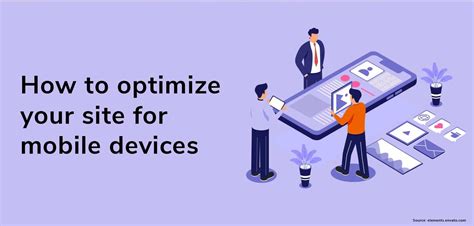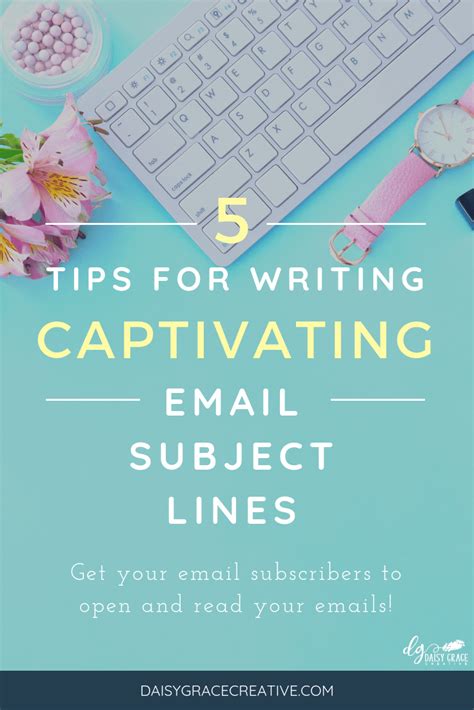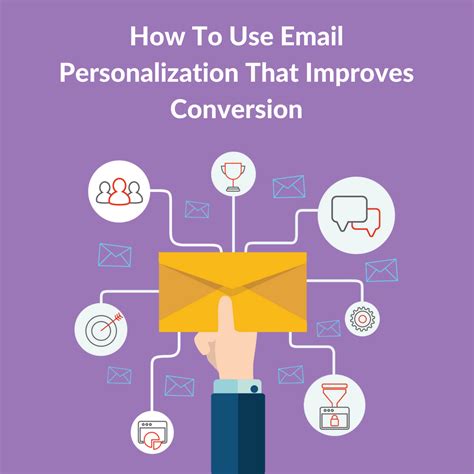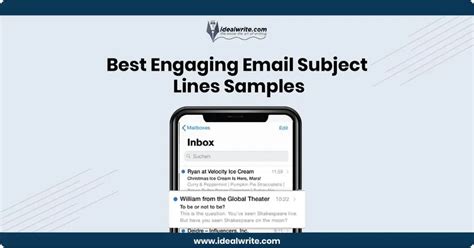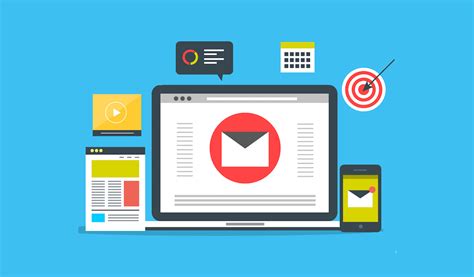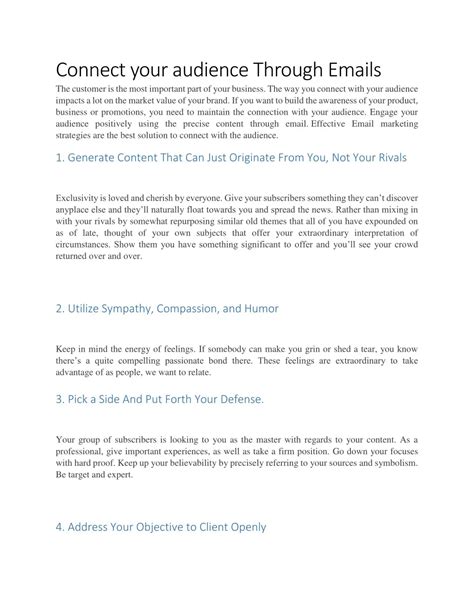When it comes to reaching out to your audience and fostering valuable connections, few marketing channels are as powerful as email. Crafting compelling messages and sending them directly to your subscribers' inboxes can drive engagement, increase brand awareness, and ultimately lead to conversions. Here are some proven tactics to help you enhance the effectiveness of your email marketing campaigns.
Capture Attention with Engaging Subject Lines
The subject line of your email serves as the initial hook that entices recipients to open and read your message. To truly stand out from the competition, it's crucial to craft subject lines that are both enticing and relevant. Consider using strong action verbs, posing intriguing questions, or creating a sense of urgency. Additionally, personalization and customization can grab attention, making recipients feel valued and more likely to engage.
Segment Your Subscribers for Targeted Content
Gone are the days of "one size fits all" email campaigns. To maximize engagement, it's essential to segment your subscribers based on their interests, preferences, or demographic information. Segmenting allows you to tailor your content and offers to specific groups, increasing their relevancy and likelihood of resonating with your audience. Whether it's by previous purchases, browsing behavior, or demographics, understanding your subscribers' unique characteristics will enable you to send more targeted and effective emails.
Create Clear and Compelling Call-to-Actions (CTAs)
Once recipients have opened your email and engaged with the content, it's vital to guide them towards the desired action. Your call-to-action (CTA) should be clear, visually prominent, and compelling. Use action-oriented language, such as "Shop Now," "Learn More," or "Download Your Guide," to prompt immediate response. Additionally, consider leveraging design elements such as buttons or highlighting the CTA with distinct colors to make it visually stand out.
Effective Strategies for a Winning Email Marketing Strategy

In order to achieve optimal results with your email marketing efforts, it is crucial to implement key strategies that can make a significant impact on the success of your campaign. By strategically planning and executing your email marketing initiatives, you can enhance customer engagement, increase conversions, and ultimately drive business growth.
- Targeted Audience Segmentation: Segmenting your email list enables you to tailor your messages to specific groups of subscribers, allowing you to deliver more relevant content and offers. By understanding the unique preferences and needs of different segments, you can personalize your emails and increase their effectiveness.
- Compelling Subject Lines: Crafting attention-grabbing subject lines is essential for enticing recipients to open your emails. By using persuasive language, posing intriguing questions, or offering a clear benefit, you can increase the open rates and capture the interest of your subscribers.
- Emphasize Personalization: Personalizing your emails goes beyond simply addressing recipients by their names. By leveraging data and insights about your subscribers, you can customize the content and offer tailored recommendations based on their past behavior and preferences. This level of personalization enhances the customer experience and boosts engagement.
- Strategic Timing and Frequency: Timing plays a crucial role in the success of your email campaigns. Experiment with different send times to identify when your audience is most receptive. Additionally, finding the right balance in terms of email frequency is important to avoid overwhelming your subscribers while staying top of mind.
- Compelling and Relevant Content: Providing valuable and engaging content is key to keeping your audience interested and motivated to take action. Ensure your emails offer valuable information, exclusive offers, and incentives that encourage subscribers to engage with your brand.
- Mobile Optimization: With the increasing use of mobile devices, it is essential to optimize your emails for a seamless mobile experience. Ensure your emails are responsive and easy to read on various screen sizes, allowing your subscribers to interact with your emails no matter where they are.
- Testing and Analysis: Continuously test different elements of your email campaigns, including subject lines, content layout, and call-to-action buttons. Analyze the results and use data-driven insights to refine your strategies and improve the effectiveness of future campaigns.
By implementing these effective strategies, you can maximize the impact of your email marketing campaigns and achieve outstanding results that contribute to the growth and success of your business.
Building a Strong Subscriber List
Forming a solid subscriber list is pivotal to the success of your email marketing endeavors. To ensure the effectiveness and longevity of your campaigns, it is crucial to attract and retain engaged subscribers who have a genuine interest in your offerings. Building a strong subscriber list requires careful planning and strategic implementation.
First and foremost, it is essential to target the right audience. Understand your target market and tailor your email marketing efforts to their specific needs and preferences. Identify their pain points and create content that provides valuable solutions.
Offering incentives is another effective way to build a solid subscriber list. Provide exclusive discounts, free resources, or access to exclusive content in exchange for sign-ups. This motivates potential subscribers to join your list and increases their likelihood of remaining engaged.
Social media integration can greatly contribute to the expansion of your subscriber list. Use social media platforms to promote your email campaigns and encourage followers to subscribe. Leverage the power of social sharing by including social media sharing buttons within your emails to encourage existing subscribers to share your content with their own networks.
Remember, quality over quantity. Focus on attracting engaged subscribers who are genuinely interested in your brand rather than simply accumulating a large number of email addresses. This will lead to higher open rates, click-through rates, and conversions.
Additionally, ensuring a seamless user experience is vital for building a solid subscriber list. Optimize your sign-up process by keeping it simple and intuitive, minimizing the required information and making it easy for users to subscribe. Consistently provide valuable and relevant content to keep subscribers engaged and prevent them from unsubscribing.
Regularly clean your subscriber list by removing inactive or disengaged subscribers. This not only improves the overall performance of your campaigns but also helps maintain deliverability rates and prevents potential blacklisting by internet service providers.
Building a solid subscriber list is an ongoing process, requiring continuous effort and optimization. Keep analyzing and refining your strategies to ensure the growth and success of your email marketing campaigns.
Creating Engaging Email Content to Drive Success
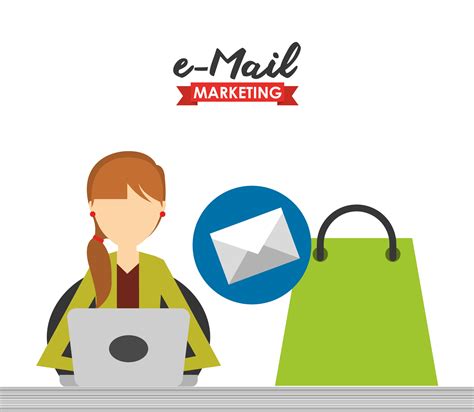
One of the key factors in running a triumphant email marketing campaign lies in the ability to craft captivating and persuasive email content. By carefully curating the right messages, businesses can effectively cultivate strong relationships with their target audience, drive conversions, and ultimately achieve their marketing goals.
- Know Your Audience: Understanding your audience is crucial when creating compelling email content. Take the time to research and analyze the preferences, interests, and demographics of your subscribers. This will help you tailor your messages to resonate with their needs and desires.
- Use Persuasive Language: The language you use within your emails plays a crucial role in capturing your recipients' attention and persuading them to take action. Employ powerful words that evoke emotion, create a sense of urgency, and clearly convey the value they will gain from your offer.
- Personalize Your Emails: Personalization is key to establishing a connection with your subscribers. Utilize merge tags to dynamically insert personalized information, such as their name or purchase history, into your emails. This personal touch makes your emails feel relevant and tailored specifically for them.
- Create Consistent Branding: Consistency in branding is vital to building brand recognition and trust. Ensure that your email templates, color schemes, and fonts align with your company's overall branding. This cohesive look will make your emails instantly recognizable and reinforce your brand's credibility.
- Include Eye-Catching Visuals: Incorporating visually appealing elements, such as high-quality images, infographics, or videos, can significantly enhance the overall effectiveness of your email content. Visuals have the power to convey messages quickly and make your emails more engaging and memorable.
- Keep It Concise and Scannable: As attention spans are often limited, it's important to keep your email content concise and easy to scan. Use short paragraphs, bullet points, and subheadings to break up the text and make it easier for recipients to quickly grasp the main points of your message.
- Optimize for Mobile Devices: With the increasing prevalence of mobile usage, optimizing your email content for mobile devices is essential. Ensure that your emails are responsive and can be easily viewed and navigated on various screen sizes. This way, you can reach and engage with your audience, regardless of the device they use.
By implementing these strategies and techniques, you can create email content that captivates your audience, encourages them to take action, and ultimately drives the success of your email marketing campaigns.
Implementing Effective Personalization Techniques
Enhancing the recipient's experience through tailored messaging has become a pivotal aspect of email marketing. By implementing effective personalization techniques, businesses are able to create a more personalized and engaging communication strategy. This article explores innovative ways to personalize email campaigns and maximize their impact.
- Segmenting your audience: Divide your email subscriber base into specific segments based on demographics, behaviors, and preferences. Tailoring your messages to different segments allows you to deliver content that resonates with each group's interests and needs.
- Dynamic content insertion: Create emails that dynamically change based on individual subscribers' preferences and previous interactions. By inserting personalized content, such as product recommendations or relevant blog articles, you can significantly increase engagement and conversion rates.
- Using dynamic subject lines: Grab the attention of your recipients by including personalized information in the subject line. By incorporating their name, location, or recent transaction, you can significantly improve open rates and make your email stand out in a crowded inbox.
- Personalized recommendations: Leverage data and analytics to provide personalized product recommendations to your subscribers. By analyzing their browsing and purchase history, you can offer tailored suggestions that are highly relevant to their interests and preferences.
- Triggered emails based on behavior: Set up automated emails triggered by specific actions or behaviors, such as abandoned carts or a recent purchase. By sending timely and relevant messages, you can re-engage customers and encourage them to take further action.
- Include user-generated content: Showcase user-generated content in your emails to add a personal touch. By featuring customer reviews, testimonials, or social media posts, you demonstrate authenticity and build credibility, thereby increasing engagement and trust.
Implementing these effective personalization techniques will enable businesses to create more impactful email campaigns and establish stronger connections with their audience. By tailoring messages, incorporating dynamic elements, and leveraging user data, organizations can enhance their email marketing efforts and achieve greater success.
Optimizing and Evaluating Performance of Your Email Marketing Campaigns

When it comes to maximizing the effectiveness of your email marketing efforts, it is crucial to analyze and optimize the performance of your campaigns. By carefully assessing and evaluating various metrics and data, you can gain valuable insights into the success of your email campaigns and make data-driven decisions to improve their performance.
Evaluating Campaign Metrics:
One of the first steps in optimizing your email marketing campaigns is to analyze the key metrics that provide a comprehensive understanding of their performance. These metrics may include open rates, click-through rates, conversion rates, bounce rates, unsubscribe rates, and overall engagement. By monitoring these metrics, you can identify areas of strength as well as any challenges or weaknesses that require attention.
Segmentation and Personalization:
Segmenting your email lists and tailoring your content to specific target audiences can significantly enhance the engagement and success of your email campaigns. By dividing your contacts into relevant segments based on their demographics, interests, or previous interactions with your brand, you can create personalized and targeted email content that resonates with each segment. This approach increases the chances of recipients opening your emails, clicking on links, and ultimately converting.
A/B Testing:
Another useful technique to optimize the performance of your email marketing campaigns is A/B testing. This involves creating two or more variations of your emails with slight differences, such as subject lines, call-to-action buttons, or content layout. By testing these different versions on a smaller segment of your audience, you can identify which elements yield better results and refine your future campaigns accordingly.
Automation and Drip Campaigns:
Implementing automation and utilizing drip campaigns can significantly improve the efficiency and success of your email marketing efforts. Automation allows you to send targeted, timely, and relevant emails based on specific triggers or customer actions. Drip campaigns, on the other hand, involve sending a series of pre-planned emails to nurture leads and guide them through the customer journey. By automating certain aspects of your email marketing strategy, you can save time, increase personalization, and optimize the overall performance of your campaigns.
Analyzing Subscriber Feedback:
Listening to your subscribers and taking their feedback into account is crucial for optimizing the performance of your email campaigns. Encourage recipients to provide feedback by including surveys or links to provide suggestions or preferences. By analyzing this feedback and gaining insight into their preferences, you can refine your email content, targeting, and overall strategy to better align with their needs and expectations.
Overall, by carefully analyzing campaign metrics, implementing segmentation and personalization, conducting A/B testing, utilizing automation and drip campaigns, and considering subscriber feedback, you can optimize the performance of your email marketing campaigns and achieve greater success in reaching and engaging your target audience.
FAQ
What are some important tips for a successful email marketing campaign?
Some important tips for a successful email marketing campaign include building a targeted and engaged email list, creating compelling and personalized content, using attention-grabbing subject lines, optimizing emails for mobile devices, and continuously testing and refining your strategies.
How can I build a targeted email list?
To build a targeted email list, you can start by offering valuable content or incentives that resonate with your target audience in exchange for their email addresses. You can also use lead generation forms on your website, social media advertising, and partnering with relevant businesses or influencers to reach a wider audience and attract subscribers who are more likely to be interested in your offers.
What types of content should I include in my email marketing campaigns?
In your email marketing campaigns, you should include a variety of content depending on your goals and audience. This can include informational articles or blog posts, product updates or recommendations, exclusive offers or promotions, customer testimonials, and engaging visuals such as images or videos. The key is to provide value to your subscribers and keep them engaged with your brand.
How can I ensure that my emails are optimized for mobile devices?
To ensure that your emails are optimized for mobile devices, you should use responsive email templates that automatically adjust their layout and design based on the screen size. It is important to keep your email design clean and simple, use larger fonts and buttons, and test your emails on different mobile devices and email clients to ensure compatibility and easy readability.
Why is testing and refining email marketing strategies important?
Testing and refining email marketing strategies is important because it helps you understand what works best for your audience, improves the effectiveness of your campaigns, and maximizes your return on investment. By testing different variables such as subject lines, content, sending times, and calls to action, and analyzing the results, you can identify areas for improvement and make data-driven decisions to optimize your future email marketing efforts.
What are some tips for creating a successful email marketing campaign?
Some tips for creating a successful email marketing campaign include: understanding your target audience, personalizing your emails, creating compelling subject lines, using a clear call-to-action, optimizing for mobile devices, tracking and analyzing your results, and being consistent with your email sending frequency.


